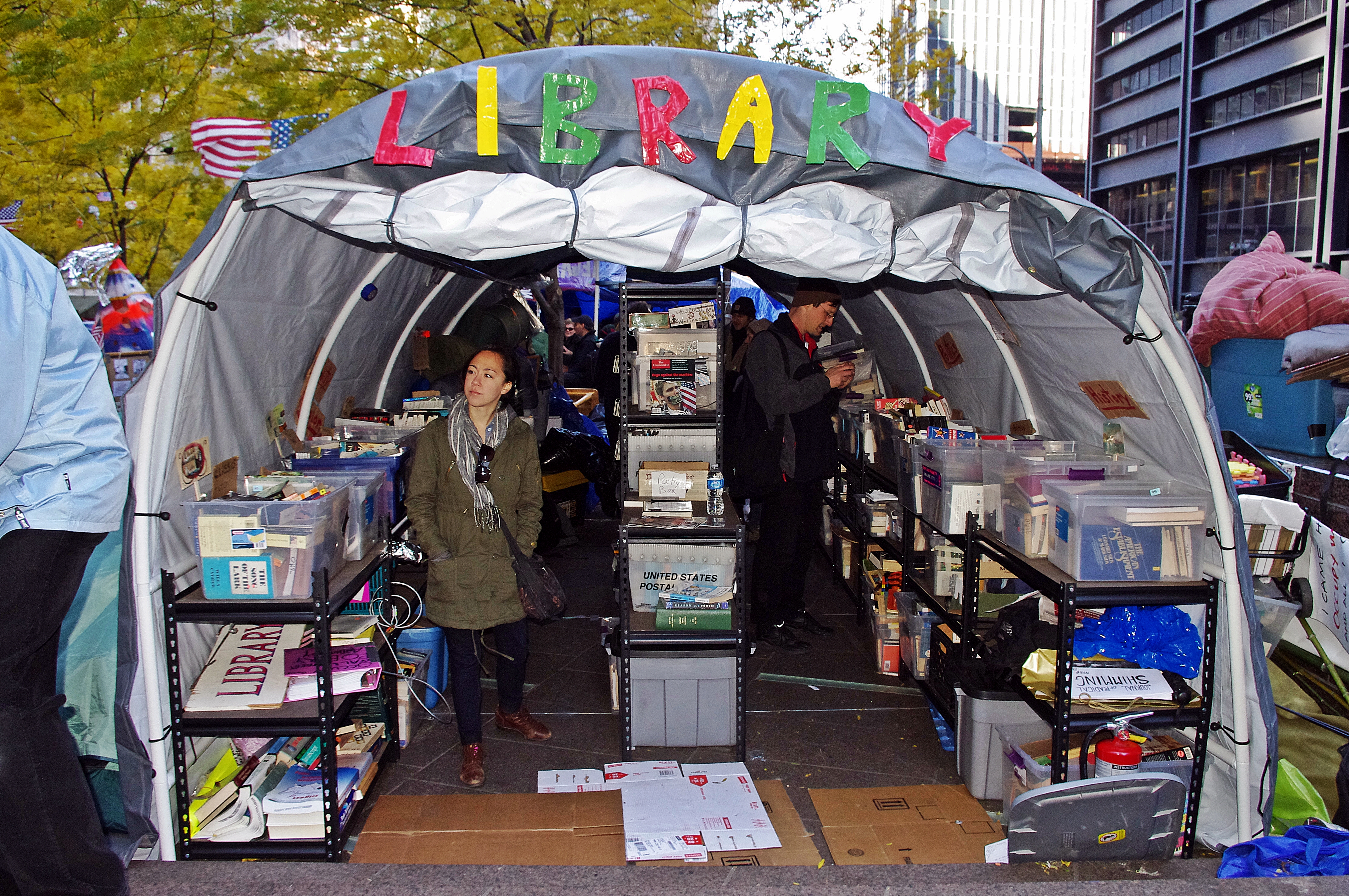Occupy Wall Street … Again?
Introductory Reflections on the 10th Anniversary
I am writing on July 4, 2021. History rages along toward the 10th Anniversary of the Occupy Wall Street Movement, which culminated on September 17, 2011, in Zuccotti Park in Manhattan, in response to the financial crisis that culminated in 2008.
The similarities observed between the years leading up to Occupy Wall Street and the present moment in this reflection are admittedly broad. Noting the similarities is not meant to imply that the return of the Occupy Movement to the streets in large numbers, as a lasting political force, is or is not inevitable or likely on its 10th Anniversary, or to imply any other predictions. My observations hardly amount to a thesis, except that they are worth reflecting upon in the coming months, and that the political and economic conditions from which Occupy arose are largely the same or worse 10 years later. The tinder from which that fire erupted is still burning, which is worth considering.
Occupy was sometimes criticized for not focusing enough on a specific issue or demand, for not organizing for the same reasons each time, for lacking consistency and clarity in messaging and leadership, and for failing to achieve concrete political changes or fulfill a singular, material political goal. Most of these charges are better understood as stereotypes than criticisms of the Occupy Movement, often stated without evidence and assumed to be negative. However, I will accept a premise of many critics of Occupy — that Occupy was sprawling, responding to many different crises simultaneously and somewhat vaguely, rather than to one crisis in particular — as a starting point from which the following observations seem relevant, for the sake of modesty.
Before laying out the similarities between where we are now and where we were in 2011, if we accept the premise that Occupy or my observations of the historical moment in which it arose are broad, focused on many issues all at once and no singular issue consistently, it is worth noting that the short-lived anti-war movement in response to the 2003 invasion of Iraq was the last major American protest movement before Occupy Wall Street. The anti-war movement of the early 2000s had more participants than Occupy. Its participants were generally older than those of Occupy. Its demands and messaging were clearer, more specific, more focused on a singular issue than Occupy’s. And its organizing tactics were more consistent than can be said of the Occupy Movement.
Yet, the political success of the anti-war movement of the early 2000s, the number of its aims realized as a result of its actions, and its stamina and influence over time, now seem clear: precisely none. The protests in America against invading Iraq in the early 2000s carried no leverage and had no material successes to point to, in the short term or the long term, despite millions participating.
The Occupy Movement, on the other hand, transformed American politics. Its influence is still felt today. Occupy was the dawn of a new era of grassroots protest movement, may or may not be over yet, resulted in concrete changes and contributions to protest movements that followed it, and was constantly accused of having no focus, no message, no leadership, no goals, no consistent way of achieving them. The protests against the Iraq War had all of this and more, everything Occupy lacked, including more participants, and accomplished nothing.
(The material changes that can be traced to the Occupy Movement will be explored in writings in HTR throughout the summer, but for now, one simple example to cite is that it’s hard to imagine the rise in popularity of Bernie Sanders, campaigning with the phrases “99%” and “1%” and a proposal to break up the banks, without the Occupy Movement coming before him. Contrast this with the anti-war movement of the early 2000s, which spawned no anti-war Presidential candidates with a major following.)
Since Occupy began 10 years ago, many of the same problems, caused by the same leadership, have continued and worsened. The similarities between now and then are worth observing as an introduction to further explorations of Occupy history as we approach its 10th Anniversary:
The number of unemployed was high in the months leading up to Occupy and is high as we approach its 10th Anniversary.[1]
As in the years before Occupy’s inception, the economy has just crashed and the country is still clawing its way out of a recession.[2] While unemployment numbers have been going down for a few months, as of May 2021, “Aggregate employment remained 7.3 million jobs below its pre-recession level,” according to a June 15 report by the Congressional Research Service.[3]
As a result of the housing collapse, homelessness was an increasingly prevalent topic in the years leading up to Occupy, and homeless people were integral to the Occupy Movement, especially in New York City, although they were (ironically) largely unrecognized, and sometimes resented for their participation, by non-homeless participants in the movement. Homelessness is also increasingly prevalent in the years leading up to Occupy’s 10th Anniversary. The increase of homelessness in America started well before, and was worsened by, the Covid Recession.[4]
The U.S. military remains bloated and expanding leading up to the 10th Anniversary. Biden’s first National Defense Authorization Act provides 754 billion dollars in so-called “defense” spending, a 2% from Trump’s final fiscal year.[5] Funding to nuclear weapons has increased under Biden, as it has under every American president from George W. Bush to the present.[6]
Concern and awareness about climate change (largely due to debate over the Keystone XL Pipeline, as well as hope that environmental issues were more likely to be addressed with a Democratic President), became slightly more mainstream in the years leading up to Occupy.[7]
As we approach the 10th Anniversary of Occupy, climate change is of greater concern now than ever.[8] Another similarity to the pre-Occupy years is that we have just elected a President who seems more likely to (positively) address climate change than the one before him.
In addition to climate change, young people were experiencing another crucial and growing threat to their futures in the years leading up to and culminating in the Occupy Movement: the ballooning student-debt crisis, which arguably spawned a new underclass of educated, overqualified, stagnant, or downwardly mobile students and graduates that became the primary organizing engine of Occupy. The student debt crisis is still with us, and awareness and debate about it are more mainstream now than in 2011 despite the lack of political change.[9]
The student debt crisis is likely an even more heated issue now than when Obama took Office, partly because there has been greater popular pressure on Biden to relieve, forgive, or cancel student debt going into Office than there was on Obama, pressure to which Biden relented in his 2020 campaign.
Additionally, Biden campaigned on promises to take steps to relieve student debt, which, as of this writing, seemingly will not happen any time soon. Obama did not emphasize the issue in his campaigns or make any significant attempts to address it while in Office.[10]
Ayelet Sheffey sums up the current phase of the student-debt crisis during Biden’s first year, months before Occupy’s 10th Anniversary, in Business Insider, “While it’s admittedly early, Biden hasn’t fulfilled any of those promises yet. The most that can be said is that he is starting to consider working on them, and it’s going to take a while to see progress.”[11]
To many everyday left-leaning Americans, the difference between the Obama and Biden administrations is that the left flank of Obama’s base was prone to feeling exploited, evaded, and skillfully rejected, while under Biden, they are beginning to feel ungracefully betrayed, sloppily disappointed.
In 2011, the wreckage of an overtly imperialist, undemocratically elected Republican administration that turbocharged one disaster after another for eight years was still fresh. Many were still waiting in 2011, with excitement or skepticism, to find out for whom the Obama administration was really working.
In the aftershock of Trump, Biden has entered a political climate not so different from the one into which Obama entered in the aftershock of George W. Bush, the major differences being that Trump is a little less intelligent and a little less articulate than George W. Bush, and Biden is a lot less intelligent and a lot less articulate than Obama.
In short, Obama never promised student debt relief. Biden did, and most likely will not deliver on that promise before the 10th Anniversary of the Occupy Movement.
Under Obama, those who crashed the economy were bailed out, and the modest relief proposed by Congress for everyday victims of the crash among the 99% was struck down in the Senate.[12]
In Occupy terms, the “1%” has been bailed out again in the wake of the Covid Recession. Covid stimulus passed under Biden on the heels of dragged out squabbles in a gridlock-circus over proposals to give small change to the 99%, a show that ended with Arizona Democrat Kiersten Sinema quite literally doing a little dance for Mitch McConnell while casting her vote to kill the $15 an hour minimum wage provision.[13]
More important to this reflection, the relief is temporary and does not seem likely to be extended or followed by a new substantial relief package.
In other words: Pandemic unemployment relief is set to run out just weeks before the 10th Anniversary of the Occupy Movement.
Originally published on The Hard Times Review
[1] U.S. Bureau of Labor Statistics, “Unemployment in July 2011,” 8/10/2011
[2] Howard Schneider, “Is It Over Yet?: Still No Recession End Date as U.S. Economy Hums Along,” Reuters, 5/4/2021
[3] Gene Falk (coordinator), “Unemployment Rates During the Covid-19 Pandemic,” Congressional Research Service, 6/15/2021 (page 2) (link: https://fas.org/sgp/crs/misc/R46554.pdf)
[4] Glenn Thrush, “Homelessness in U.S. Rose for 4th Straight Year, Report Says,” The New York Times,3/18/2021
[5] Budget of the U.S. Government, Fiscal Year 2022, Office of Management and Budget (page 39) (link: https://www.whitehouse.gov/wp-content/uploads/2021/05/budget_fy22.pdf)
[6] Lara Seligman, Bryan Bender, Connor O’Brien, “Biden Goes ‘Full Steam Ahead’ On Trump’s Nuclear Expansion Despite Campaign Rhetoric,” Politico, 6/2/2021
[7] Kate Sheppard, “What’s All the Fuss About the Keystone XL Pipeline?” Mother Jones, 8/24/2011
[8] Vitoria Bekiempis, “Earth is Trapping ‘Unprecedented Amount of Heat,’ Nasa Says,” The Guardian, 6/17/2021
[9] Adam S. Minsky, “Pressure Builds on Biden to Extend Student Loan Pause And Cancel Student Debt – Here’s Where Things Stand,” Forbes, 6/24/2021
[10] Elaine Pofeldt, “Obama’s Education Focus Overlooks Next Financial Contagion,” CNBC, 1/29/2014
[11] Ayelet Sheffey, “Biden Campaigned on Cancelling and Reforming Student-Debt. Here’s Where Those Promises Stand,” Business Insider, 6/27/2021
[12] David Goldman, “Senate Vote Fails, Obama Gets $350B,” CNN Money, 1/15/2009
[13] https://www.youtube.com/watch?v=nNo_U7PTGzk&ab_channel=BloombergQuicktake%3ANow






